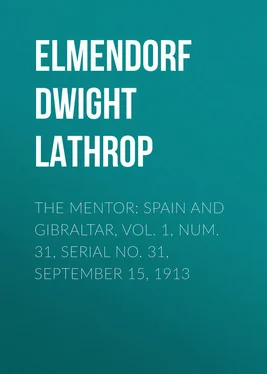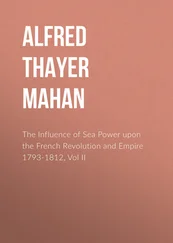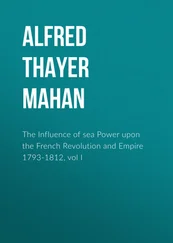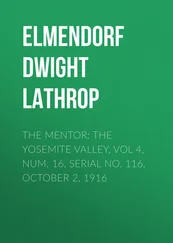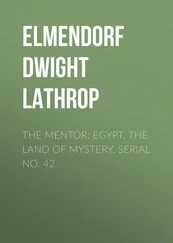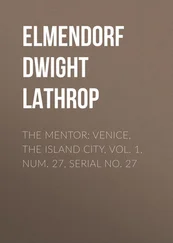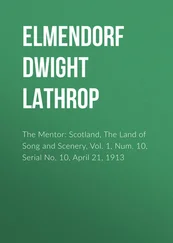Dwight Elmendorf - The Mentor - Spain and Gibraltar, Vol. 1, Num. 31, Serial No. 31, September 15, 1913
Здесь есть возможность читать онлайн «Dwight Elmendorf - The Mentor - Spain and Gibraltar, Vol. 1, Num. 31, Serial No. 31, September 15, 1913» — ознакомительный отрывок электронной книги совершенно бесплатно, а после прочтения отрывка купить полную версию. В некоторых случаях можно слушать аудио, скачать через торрент в формате fb2 и присутствует краткое содержание. Жанр: foreign_antique, foreign_prose, на английском языке. Описание произведения, (предисловие) а так же отзывы посетителей доступны на портале библиотеки ЛибКат.
- Название:The Mentor: Spain and Gibraltar, Vol. 1, Num. 31, Serial No. 31, September 15, 1913
- Автор:
- Жанр:
- Год:неизвестен
- ISBN:нет данных
- Рейтинг книги:5 / 5. Голосов: 1
-
Избранное:Добавить в избранное
- Отзывы:
-
Ваша оценка:
- 100
- 1
- 2
- 3
- 4
- 5
The Mentor: Spain and Gibraltar, Vol. 1, Num. 31, Serial No. 31, September 15, 1913: краткое содержание, описание и аннотация
Предлагаем к чтению аннотацию, описание, краткое содержание или предисловие (зависит от того, что написал сам автор книги «The Mentor: Spain and Gibraltar, Vol. 1, Num. 31, Serial No. 31, September 15, 1913»). Если вы не нашли необходимую информацию о книге — напишите в комментариях, мы постараемся отыскать её.
The Mentor: Spain and Gibraltar, Vol. 1, Num. 31, Serial No. 31, September 15, 1913 — читать онлайн ознакомительный отрывок
Ниже представлен текст книги, разбитый по страницам. Система сохранения места последней прочитанной страницы, позволяет с удобством читать онлайн бесплатно книгу «The Mentor: Spain and Gibraltar, Vol. 1, Num. 31, Serial No. 31, September 15, 1913», без необходимости каждый раз заново искать на чём Вы остановились. Поставьте закладку, и сможете в любой момент перейти на страницу, на которой закончили чтение.
Интервал:
Закладка:
Dwight L. Elmendorf
The Mentor: Spain and Gibraltar, Vol. 1, Num. 31, Serial No. 31, September 15, 1913
The Mentor
“A Wise and Faithful Guide and Friend”
Vol. 1
No. 31SPAIN AND GIBRALTAR
Gone is the ancient glory of Spain. To the visitor it appeals chiefly as a country of a splendid past. This is not true, of course, of some of the more populous localities. Barcelona is full of life and commercially enterprising, and Madrid is full of activity and is a natural center of interest as the capital of the nation. But many of the cities and towns of Spain attract chiefly as interesting and picturesque survivals. They breathe the atmosphere of a former age. We feel the influence of it wherever we turn. Spain is not much traveled by tourists. More would go perhaps if they realized what splendid scenery was there, and how rich in historic and romantic associations the country was.
Since the days of the first inhabitants, the Iberians, and beginning with the Celts who crossed the Pyrenees some five hundred years B. C., Spain has been invaded by Phoenicians, Carthaginians, Romans, Vandals and Visigoths, Arabs and Moors, and each of these races has left evidences of its dominion, in monuments of one kind or another, in architectural forms, in roads and buildings, and in the language and customs of communities. The interesting Basque people of the northern provinces of Spain are declared by students of history to be almost unmixed descendants of the original Iberians.
And in these many years what glory has been Spain’s! She has been aptly called an “eddy of tribes and races.” Under Moorish rule she commanded the Mediterranean. Then as a Christian kingdom, beginning with Rodrigo the Cid and Alfonso VI in the eleventh century, and extending through several hundred years under such famous rulers as Ferdinand and Isabella and later Charles V and Philip II, Spain acquired the whole peninsula and rose to be a great world power. In war she was a dreaded foe of France, England, and the Netherlands. Her armada for years swept the seas. In search of treasure and to extend Spain’s power and possessions, Vasco da Gama discovered India and Columbus opened up the new continents of the western world.
All the achievements of Spain in the brilliant past are brought home to the visitor who spends even a few weeks in that country. So many things in Spain are interesting for what they were ! The visitor soon comes to know the mood of Washington Irving, who dwelt for a time in the Alhambra. His impressions are like those of a beautiful dream. Irving withdrew from the world of his day and immersed himself in the romance of the past. That is the mood in which the traveler will enjoy himself most when visiting many places in Spain.
The very entrance to Spain is a fit preparation for the strange, interesting and beautiful things to be seen there. No one can forget the day that he crosses the impressive boundary between France and Spain, winding about and tunneling through the majestic Pyrenees. Once this superb mountain range is passed, the traveler feels as if he had come upon a different world from any that he has seen before. His attention turns first, most naturally, to the great cities, which differ essentially from one another. Perhaps no two more contrasting cities could be selected than Toledo and Madrid. Toledo was from the earliest times a capital city. The Romans, Goths, Moors, and finally the Christians, made it the headquarters of authority. It was the scene of the triumph of that world-admired hero of the eleventh century, Rodrigo the Cid. Toledo is in all respects an impressive relic of bygone splendor. Madrid, on the other hand, is a modern city. In the days when Toledo was most magnificent and had a population of over 200,000, Madrid was a little town. Today Madrid numbers over 500,000 inhabitants, while Toledo’s population has dwindled to less than 30,000. In Toledo we find many things as they have been for hundreds of years. The city is still famous for its swords. The Toledo blade is known the world over today as it was in Roman times.
The traveler does well to visit Toledo first. Its very situation is extraordinary. The river Tagus flows about it and almost binds it in like a rope. The banks of the river are rocky and steep, and spanned by several interesting old stone bridges.
The effect of Toledo viewed from the south and looking across the gorge through which the river flows is remarkable. The city is inclosed within ancient Moorish and Gothic fortifications, and presents an aspect of a jumble of housetops dominated by two great structures, the cathedral and the Alcázar.
Enter Toledo, and you find novelty and picturesqueness on every side. The streets are narrow and crooked. The houses are blind and forbidding on the outside, reserving their attractions for their inner courts. Everything about you is strange and curious, and full of historic significance. If you wish to get the history of Spain in condensed form, you will find it in Toledo.
The cathedral is the most important feature of the city, and one of the finest and most interesting in Europe. The religious life of Spain centered there for centuries. On that site a Christian temple stood in the sixth century. When the Moors came they made a mosque of it. Then Alfonso VI took possession in 1085, and the Moors were driven out. In the thirteenth century the old building was torn down and the present edifice was begun. During 265 years it was in course of construction – a lifework for many architects and artisans. And there the great archbishops of Toledo controlled the government and civilization of Spain for years. Everything of importance that made Spanish history was then in their hands. You are made to realize this when you visit the cathedral. It contains many valuable relics of history and art treasures. When you have seen these go to the tower. The view will repay you. The most prominent object to be seen from there is the Alcázar, standing on the highest ground of the city. This building is the phoenix that has risen over conflagrations of former structures on that site. The original building was a Roman citadel. When the Cid reigned supreme, in the eleventh century, he resided there. Afterward fires consumed the building, and it was rebuilt several times. It has been in turn a castle, a palace, a cadet academy, and now it stands there a stately and imposing monument to the past.
Madrid was made the capital by Philip II in 1560. It was not by nature attractive. The winter winds are cruel, and the summer heat is intense. The country roundabout is bleak, and for years after it became the capital it remained a city of small buildings and unimposing appearance. But the court being there, it was the center of all political and religious activities. Arts and letters received their greatest stimulus under the patronage of church and court. Cervantes lived there, and it was in Madrid that he finished his immortal “Don Quixote.” The Bourbons came into power in the eighteenth century, and then the great royal palace was built. After that Madrid increased rapidly in population and improved in appearance. Today it is a city of great activity, full of life, gaiety, and fashion; in short, the Spanish Paris.
Читать дальшеИнтервал:
Закладка:
Похожие книги на «The Mentor: Spain and Gibraltar, Vol. 1, Num. 31, Serial No. 31, September 15, 1913»
Представляем Вашему вниманию похожие книги на «The Mentor: Spain and Gibraltar, Vol. 1, Num. 31, Serial No. 31, September 15, 1913» списком для выбора. Мы отобрали схожую по названию и смыслу литературу в надежде предоставить читателям больше вариантов отыскать новые, интересные, ещё непрочитанные произведения.
Обсуждение, отзывы о книге «The Mentor: Spain and Gibraltar, Vol. 1, Num. 31, Serial No. 31, September 15, 1913» и просто собственные мнения читателей. Оставьте ваши комментарии, напишите, что Вы думаете о произведении, его смысле или главных героях. Укажите что конкретно понравилось, а что нет, и почему Вы так считаете.
